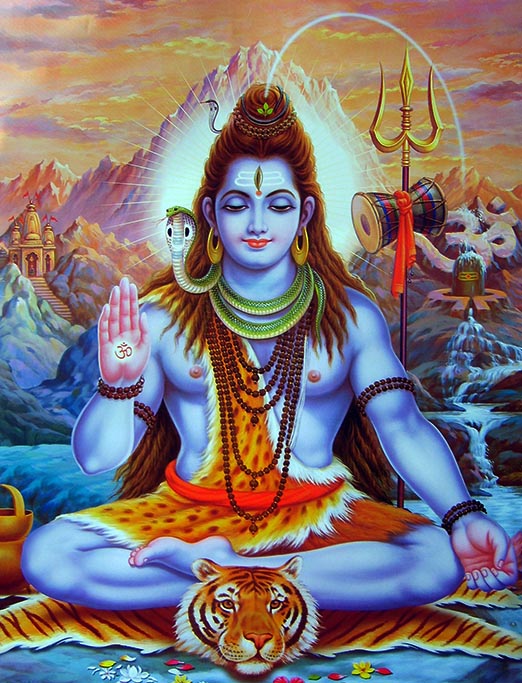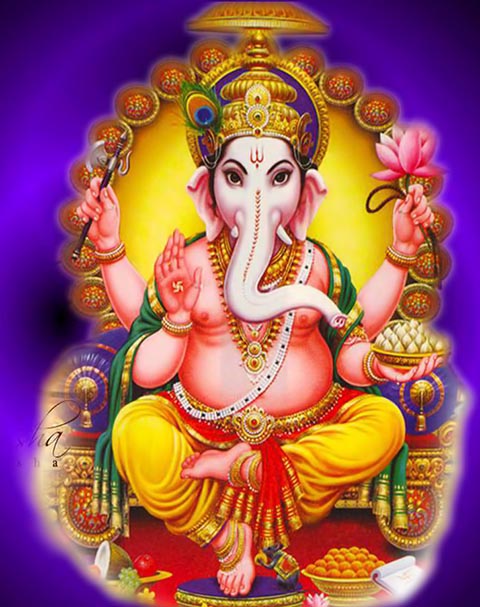Chitragupta
Chitragupta is a Hindu god assigned with the task of keeping complete records of actions of human beings on the earth. Upon their death, Chitragupta has the task of deciding heaven or the hell for the humans,…
Chitragupta is a Hindu god assigned with the task of keeping complete records of actions of human beings on the earth. Upon their death, Chitragupta has the task of deciding heaven or the hell for the humans,…
Lord Hanuman is the monkey deity renowned for his courage, power, devotion and faithful, selfless service. Lord Hanuman, the mighty ape aided Lord Rama in his expedition against evil forces,…

Lord Shiva is third member of Hindu trinity and is considered as the most powerful god. Lord shiva represents aspect of death or destruction. Other two gods of trinity are Lord Brahma and Lord Vishnu. Brahma is considered as the Creator and Vishnu is considered as god of life and caretaker. Shiva is usually worshipped in the form of lingam. Lord Shiva represents the aspect of the Supreme Being that continuously dissolves to recreate in the cyclic process of creation, preservation, dissolution and recreation of the universe. Lord Shiva is Known by many names – Mahadeva, Mahayogi, Maniimahesh, Pashupati, Nataraja, Bhairava, Vishwanath, Bhava, Bhole Nath – Lord Shiva is perhaps the most complex of Hindu deities. Hindus recognize this by putting his shrine in the temple separate from those of other deities.
Lord Shiva is described as an omniscient yogi, who lives an ascetic life on Mount Kailash with wife Parvati and two sons Ganesha and Kartikeya. Shiva has many benevolent as well as fearsome forms. He is often depicted as immersed in deep meditation, with his wife and children or as the Cosmic Dancer. In fierce aspects, he is often depicted slaying demons. When balance of life is disturbed and sustenance of life becomes impossible, Lord Shiva dissolves the universe for creation of the next cycle so that the souls can have another opportunity to liberate themselves from bondage with the physical world. Thus, Lord Shiva protects the souls from pain and suffering that would be caused by a dysfunctional universe.
Shiva is known to have untamed passion, which leads him to extremes in behaviour. Sometimes he is an ascetic, abstaining from all worldly pleasures. At others he is a hedonist. It is Shiva’s relationship with his wife Parvati that brings him balance. Their union allows him to be an ascetic and a lover,
(more…)
Ganesha is elephant headed Hindu deity riding a mouse. Lord Ganesha has head of a elephant but body of a human form. Hindus worship lord Ganesha before starting any activity whether it is related to business, education, religious worshipping, spiritual activity or any worldly activity as it is believed that power of the Supreme lord Ganesha will remove obstacles and ensure success in their endeavours. Ganesha also worshipped as the god of education, knowledge, wisdom and wealth.
Ganesha also known as as Ganapati, Vinayaka , Vighnavinashaka, Gajanana and Pillaiyar . His image is found throughout India and Nepal. Devotion to Ganesha is widely diffused and extends to Jains, Buddhists, and beyond India.
 The portrayal of Lord Ganesha as the blend of human and animal parts symbolizes the ideals of perfection as conceived by Hindu sages and illustrates some philosophical concepts of profound spiritual significance.
The portrayal of Lord Ganesha as the blend of human and animal parts symbolizes the ideals of perfection as conceived by Hindu sages and illustrates some philosophical concepts of profound spiritual significance.
Elephant head, wide mouth, and large ears: the large head of an elephant symbolizes wisdom, understanding, and a discriminating intellect that one must possess to attain perfection in life. The wide mouth represents the natural human desire to enjoy life in the world. The large ears signify that a perfect person is the one who possesses a great capacity to listen to others and assimilate ideas.
The trunk and two tusks with the left tusk broken: there is no known human instrument that has an operating range as wide as that of an elephant’s trunk. It can uproot a tree and yet lift a needle off the ground. Likewise, the human mind must be strong enough to face the ups and downs of the external world and yet delicate enough to explore the subtle realms of the inner world. The two tusks denote the two aspects of the human personality, wisdom and emotion. The right tusk represents wisdom and the left tusk represents emotion. The broken left tusk conveys the idea that one must conquer emotions with wisdom to attain perfection.
Elephant eyes: the elephant eyes are said to possess natural deceptiveness that allows them to perceive objects to be bigger than what they really are. Thus the elephant eyes symbolize the idea that even if an individual gets “bigger and bigger” in wealth and wisdom, he should perceive others to be bigger than himself; that is, surrender one’s pride and attain humility.